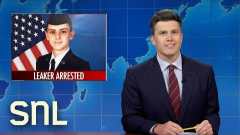It’s official. At the end of the 2024 campaign, the Oakland Athletics will be dead. They will play at least their next three seasons at Sutter Health Park, home of the minor-league Sacramento River Cats, and aim to move into a new ballpark in Las Vegas in 2028.
When it was announced in 2023 that the A’s were officially planning on ditching the Bay Area for Vegas, it was a serious blow to the baseball community. But it hit few people harder than Dave Stewart.
“It’s going to be forgotten that there even was an Oakland A’s franchise, quite frankly,” said Stewart to Bill Shaikin of the Los Angeles Times. “The future generations of kids that grow up in Oakland won’t even know there was ever a team there, that Rickey Henderson was one of the best players ever to put a uniform on, that Joe Morgan was one of the best players ever to put a uniform on, that Frank Robinson was one of the best players ever to put a uniform on.”
For 67 years, Stewart has lived and breathed with the A’s like few others have, but as many can sympathize. He was born in Oakland and was 11 when the new team arrived in 1968. They had a young core bursting with talent and it didn’t take long for them to become the monsters of Major League Baseball.
There was future Hall of Famer Jim “Catfish” Hunter, the man who only had the nickname because owner Charlie Finley made it up, but who could mystify opposing hitters to such a degree that he threw the AL’s first perfect game in a dozen years during one of Oakland’s very first games at the Coliseum. There was Vida Blue, who had just 10 MLB starts to his name before embarking on an MVP and Cy Young Award-winning season in 1971, twirling a masterful 1.82 ERA in 312 innings, with eight shutouts. There was Rollie Fingers, the mustachioed bullpen ace who flourished while becoming one of MLB’s first great closers.
And of course, there was a man who made himself so famous that you don’t even need his last name: Reggie.
Joe Rudi. Bert Campaneris. Ray Fosse. Gene Tenace. Captain Sal Bando.
These were just some of the names that led Oakland to running roughshod over their competition in the early 1970s. They broke through to reach the playoffs in ‘71 and then won three consecutive World Series titles from 1972-74. To this day, they remain the only MLB franchise aside from the New York Yankees to pull off a three-peat.
These were the teams that helped Stewart fall in love with baseball. Although Finley’s own cheapskate ways combined with the advent of MLB free agency would end up dismantling this memorable group, the A’s became entrenched in the Oakland community. As Stewart turned into a pretty good pitcher in his own right, that all would eventually lead him to the A’s, but their mere presence in Oakland helped them nab an all-time icon.
As Stewart noted, the Bay Area had already developed the likes of Cooperstown legends Joe Morgan and Frank Robinson. The rich baseball roots would soon produce another inner-circle Hall of Famer in Rickey Henderson. Local scout J.J. Guinn was adamant in his recommendation for the A’s to draft the Oakland Technical High School prep star in 1976, and in the fourth round, he got his wish.
In just a few short years, Rickey would debut with the A’s. The base-stealing record books were never the same again.
The fans loved “BillyBall” with Rickey under former Yankees skipper Billy Martin (another Bay Area native), and they turned the A’s back into a division title winner in 1981. Martin’s self-destructive tendencies and abuse of the pitching staff would torpedo that mini-generation, and the flailing A’s dealt Rickey to the Yankees for prospects a few years later.
Thankfully, that wasn’t the end of Rickey’s story in Oakland. At age 35, Sandy Alderson had taken over as the A’s general manager in ‘83, and smart drafting and savvy development built up another brilliant core. José Canseco and Mark McGwire won back-to-back AL Rookie of the Year honors from 1986-87, and under manager Tony La Russa, the “Bash Brothers” helped the A’s skyrocket to 104 wins in ‘88 — more than even the 1972-74 dynasty ever accomplished in a regular season.
:no_upscale()/cdn.vox-cdn.com/uploads/chorus_asset/file/25371911/1172819741.jpg)
Photo by MediaNews Group/The Mercury News via Getty Images
Canseco was the first MLB player to ever go 40/40, Walt Weiss became Oakland’s third-straight Rookie of the Year, converted starter Dennis Eckersley matched Fingers’ legacy as a dominant closer, and their ace was a local kid who found his way back to the Coliseum.
Stewart had been drafted by the Los Angeles Dodgers and showed promise, but he struggled to put it all together in the big leagues. The right-hander had been traded twice before finally being released outright by the Philadelphia Phillies in May 1986. At this point, Stewart was pushing 30 and had a 5.02 ERA since the start of the ‘84 season. Finding little interest elsewhere, he connected with Alderson and asked for a tryout.
That tryout turned into a minor-league deal, and Stewart got into 29 games with the ‘86 A’s. It took a little time, but he mastered the art of the forkball under pitching coach Dave Duncan. From 1987-90, Stewart won at least 20 games in four consecutive seasons and never finished lower than fourth in Cy Young Award voting. He was an iron man, averaging a 265-inning workload that would make 21st-century teams wince. “Smoke” was also money in the bank come playoff time, notching a 2.23 ERA in 12 postseason starts from 1988-90.
The A’s were upset by Kirk Gibson’s Dodgers in the ‘88 World Series, but they came back with a vengeance in ‘89. Seizing on the momentum and the furor of the Bay Area that pushed Oakland’s attendance from 1.68 million in ‘87 to 2.29 million in ‘88, owner Walter Haas did something daring. He actually invested in the team. That included reacquiring Rickey Henderson from the George Steinbrenner-induced mess that was the late-’80s Yankees.
This was no small addition, as Rickey was in the final year of a then-big $9.2 million deal and was known to be seeking a lofty contract the following offseason. Haas was fine with it and Alderson pulled off the deal. The prize was a championship in the ‘89 Fall Classic, during which Henderson hit .474/524/.895 and Stewart won World Series MVP honors with a shutout in Game 1 and seven strong innings in the Game 4 clincher to secure a sweep.
In sadly typical A’s fashion, even this crowning moment had a bittersweet tone to it. The Loma Prieta earthquake had interrupted this series — literally on air — and cast a pall over this Battle of the Bay against the San Francisco Giants.
All the same, the excitement for the A’s was still palpable. Attendance had jumped again, and Haas re-signed Rickey to a four-year, $12 million contract (a then-MLB record, albeit one that lasted just a couple days). In 1990, he rewarded them with an MVP performance as the A’s won 103 games and dusted away the Boston Red Sox in the ALCS to capture their third consecutive pennant. Only the 1998-2000 Yankees of Derek Jeter and company have matched that feat across the past four decades of Major League Baseball.
The A’s suffered a stunning sweep at the hands of the Cincinnati Reds in the World Series. Nonetheless, it was another memorable season in Oakland, and the A’s drew 2.9 million fans to the Coliseum — third-most in MLB, outdrawing the Yankees and almost every other franchise. By the start of ‘91, they even had the biggest payroll in the game! This was the team to see, and as hard as it is to imagine now, they had both the players and the venue to live up to it.
:no_upscale()/cdn.vox-cdn.com/uploads/chorus_asset/file/25372001/1221501114.jpg)
Photo by David Madison/Getty Images
Isn’t that view a sight to see? It’s gorgeous, befitting of the kind of model franchise that the Oakland Athletics once were.
It’s only appropriate that this is how it looked for the final Opening Day in Oakland, on March 28, 2024.
:no_upscale()/cdn.vox-cdn.com/uploads/chorus_asset/file/25372023/2122988259.jpg)
Photo by Ezra Shaw/Getty Images
That garish structure blocking the mountain view is known as “Mount Davis,” in reference to late Oakland Raiders owner Al Davis.
The A’s had aged out of their contention window and most of the figures who led them to their excellence had moved on by the mid-’90s. The organization was hit with a tough double whammy, as they dealt with fan alienation following the 1994 players’ strike and the passing of Walter Haas in September 1995. No team owner in this world is perfect, but it can’t be denied that Haas did what he could to bolster the Bash Brothers Era — far more than Finley did for those great ‘70s teams, let alone what Fisher is doing today.
Stephen Schott and Ken Hofmann purchased the A’s from the Haas estate, and they promptly set about slashing payroll. It was an ugly time in Oakland, and no one would blame fans from staying away with the teams that Schott and Hofmann were putting on the field. (Sound familiar?) So when Davis wanted to bring his Los Angeles Raiders back to Oak





